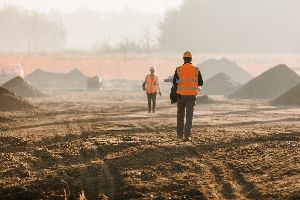
Land developers looking to pursue construction on contaminated sites must first ensure the area is clear of hazardous waste. The Triad Approach is a method used to carefully plan out the waste removal process through data-driven decision-making. Find out how geoscientists leverage this innovative strategy below.
What Is the Triad Approach?
The Triad Approach is based on three core elements: systematic planning, dynamic work strategies, and real-time measurement. The systematic plan establishes goals for each step of the project, and uses scientifically sound reasoning for decision-making.
Prior to the site testing, planners must determine which decisions will need to be made, what information will be necessary for driving those decisions, and which data collection methods will be used. All parties involved in the process should participate in this initial planning, including geoscientists and experts who can inform other stakeholders on the tools and processes to be used.

The next pillar, dynamic work strategies, enables the team to take appropriate action when new information or test results emerge. Strategies can be determined using a decision tree, along with contingency plans if further contaminants are found or hazardous waste levels are lower than anticipated. This aspect of the Triad promotes adaptability in the midst of uncertainties.
Finally, real-time measurement involves continuous on-site testing. This approach prevents the delays of having to send test samples to an offsite lab. Geoscientists can use field-based collection methods and sampling tools to perform water and soil tests. Decision-makers can then use this real-time data to inform the work strategy, which could mean implementing remediation methods or moving to other areas within the site.
What Are Its Benefits?
Using the Triad Approach can help your project move forward swiftly despite uncertainties about the location and extent of hazardous waste at a site. It provides a framework for decision-making that controls costs without compromising the overall goals of the project.
Because the approach is rooted in flexibility, it also ensures contaminates sites are handled promptly with the best strategy based on real-time data. As such, the Triad Approach prevents delays and wasted resources, enabling the most efficient remediation process possible.
If you’re looking for trusted geoscientists who leverage the Triad Approach for smooth and efficient hazard waste remediation, turn to GeoTek Alaska. Located in Anchorage, this team of experts has served the community for more than 20 years. These highly trained geoscientists have mobile testing technologies and can reach remote areas to provide quick, accurate information about your site. Find out more about their services online or discuss your project by calling (907) 569-5900.
About the Business
(6 reviews)
Have a question? Ask the experts!
Send your question

